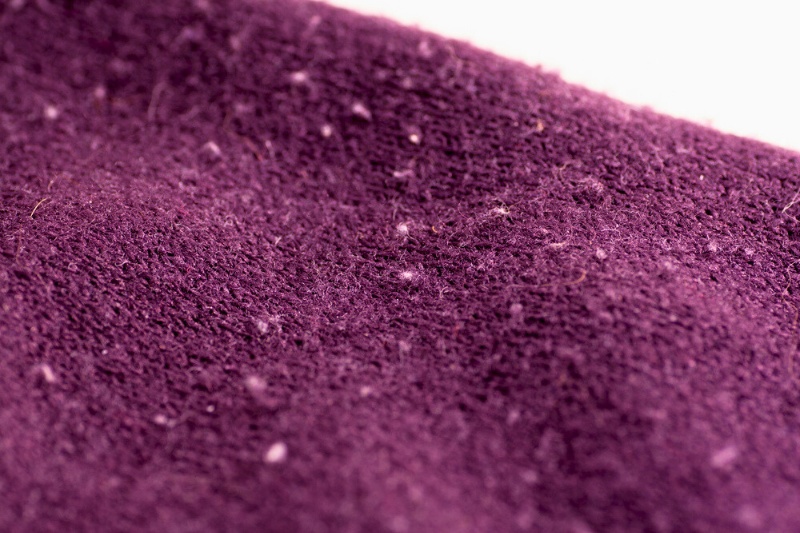Washing machines should leave our clothes feeling fresh, clean, and ready to wear. So, if your clothes come out of the washer with lint on, it can be incredibly frustrating.
Fortunately, we have the solution. Here, we give you six reasons your clothes are covered in lint and easy-to-follow solutions.
Why Do My Clothes Come Out of the Washer with Lint On?
Several things could be responsible for your clothes coming out of the washing machine covered in lint particles. Here is a look at the most common causes and solutions you can try at home today.
Cause 1: Fabric types

Some fabrics naturally shed more lint than others. This all depends on the weave of the material and the type of fibres used.
For example, fabrics like cotton and flannel tend to produce more lint during washing compared to synthetic fabrics, and here is why:
- Cotton: The structure of cotton fibres makes them prone to breaking during the washing process, releasing small lint particles. Cotton is also highly absorbent, and its fibres can hold onto loose particles, contributing to lint accumulation.
- Flannel: Flannel is often woven with a soft and fuzzy texture, featuring a loose weave. While this characteristic adds to its comfort and warmth, it also means that flannel fabrics can release more lint during washing due to the loosely bound fibres.
On the other hand, synthetic fabrics (polyester, nylon, etc.) tend to shed less lint than natural materials.
These fabrics are engineered to be more durable and have smoother surfaces, reducing the likelihood of fibre breakage and lint release.
The solution: Wash clothes made from similar materials together

When different materials rub against each other during washing, friction can occur, especially when laundering more abrasive materials with delicate clothing.
This friction may lead to fibres breaking or loosening, producing lint. Washing similar materials together minimises this friction, reducing the chances of lint being released.
If you have items that produce large amounts of lint, washing these items separately from materials that don’t produce lint also stops the lint from transferring onto the latter.
You can also rework your wardrobe to include more items made from synthetic materials instead of natural fibres.
Cause 2: Worn-out clothes
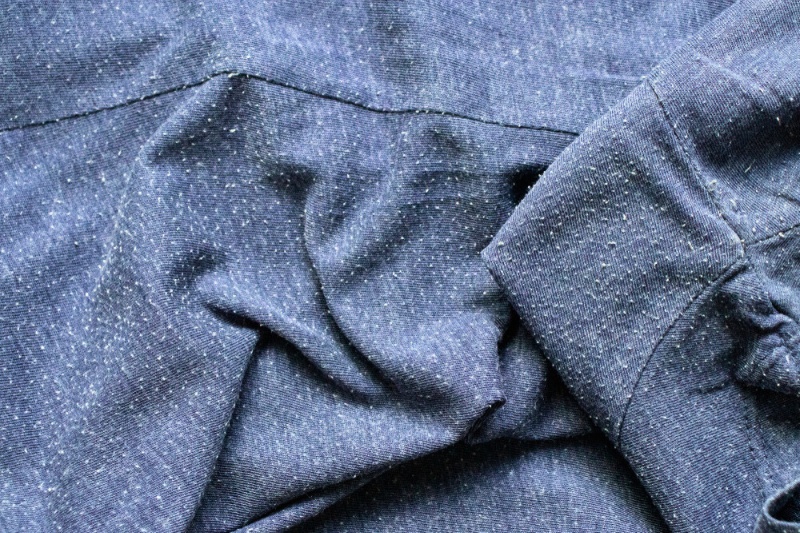
As clothes age and undergo repeated washing and wear, the fibres within the fabric gradually break down and weaken.
This natural process of wear and tear contributes to increased lint. If your garments keep coming out of the washer with lint on, it might be that they’re old.
The solution: Always wash garments according to the care label
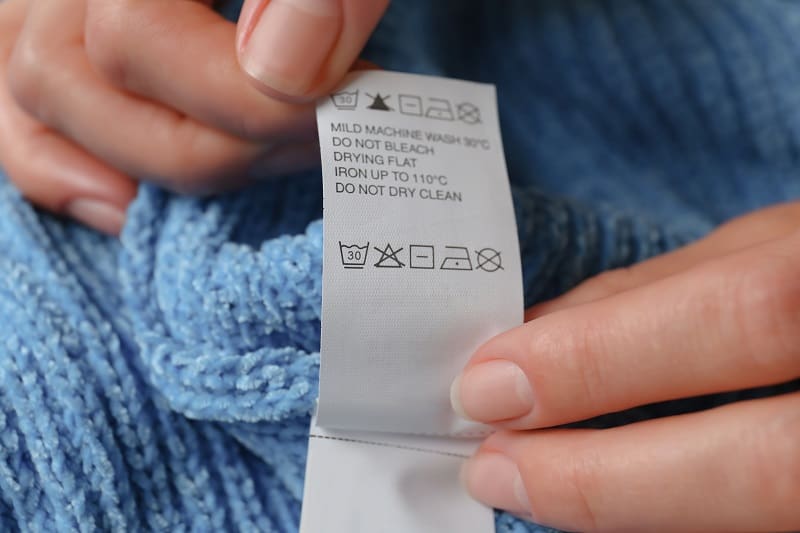
All clothes will wear out eventually. However, to minimise lint from worn-out clothes, always handle garments with care, follow recommended laundering instructions on care labels, use gentle washing cycles, and avoid overloading the washing machine.
Additionally, retiring heavily worn or damaged items from regular use can help reduce lint in the long run.
You can hand wash these items instead, which is gentler on the damaged fabric and prevents lint from getting onto other garments.
Purchasing higher-quality items can also make your clothes last longer before they become too worn out.
Cause 3: Overloading the Washer

When your washing machine is overloaded, the clothes experience increased stress during the wash and spin cycles. The tightly packed fabrics rub against each other, causing friction and abrasion.
This friction can break clothing fibres, especially in natural fabrics or older garments. As fibres break, they become loose and contribute to lint production.
In an overloaded washer, lint released from just one item is also more likely to spread to neighbouring clothes as they’re touching and tightly packed.
This lint transfer can result in a higher overall lint content on the laundry load – everything becomes covered.
The solution: Check your washing machine capacity and wash smaller loads

Refer to your washing machine user manual to check the maximum capacity of the appliance if you don’t know it already.
We also have a handy guide to understanding washing machine capacities, which might be helpful.
Once you know how many clothes your washer can handle, stick to these recommended load capacities.
Not only will this help reduce the amount of lint produced, but it also helps your clothes last longer as the fabrics are less likely to become damaged.
Additionally, overloading not only affects the clothes but also places additional stress on the washing machine’s components, such as the motor and belts.
Therefore, you’re helping to extend the lifespan of your washer by laundering smaller loads at a time.
Cause 4: Hard water

If you live in a hard water area in the UK, this may be why your clothes are covered in lint. Rather than the water contributing to lint production, it makes the lint that is produced more likely to stick to your garments and harder to wash away. Here’s how:
- Soap scum formation: When the minerals in hard water interact with laundry detergent, it can lead to the formation of soap scum. Soap scum is a sticky, insoluble substance that can adhere to fabrics, trapping lint particles and preventing them from being effectively rinsed away during the wash cycle.
- Reduced detergent effectiveness: Hard water interferes with the ability of detergents to dissolve properly. This reduced effectiveness can leave behind detergent residues on clothes.
Clothes with detergent residues may attract and retain lint, creating a cycle of accumulation over successive washes.
The solution: Soften the water in your washing machine
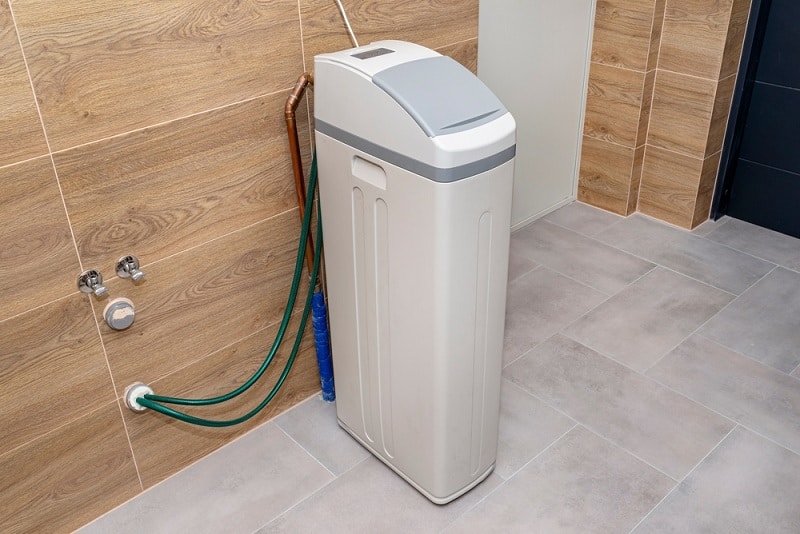
You need to address the mineral content that interferes with the effectiveness of detergents and can contribute to lint accumulation.
Your first option is to add a water softener to your laundry routine. Water softeners, available in various forms (powders, pellets, or liquid), work by exchanging calcium and magnesium ions with sodium ions.
Alternatively, add half a cup of white vinegar or bicarbonate or soda to the rinse cycle. These natural substances act as water-softening agents and can solve your hard-water issue.
Some detergents are also specifically formulated for hard water. These contain agents that bind with minerals and prevent them from interfering with the cleaning process.
If you’re having issues with hard water throughout your home, you might consider installing a water softener system.
These systems treat all the water entering your home. While a more significant upfront investment, they provide a comprehensive solution for all water-related issues.
Cause 5: Too much or poor quality detergent
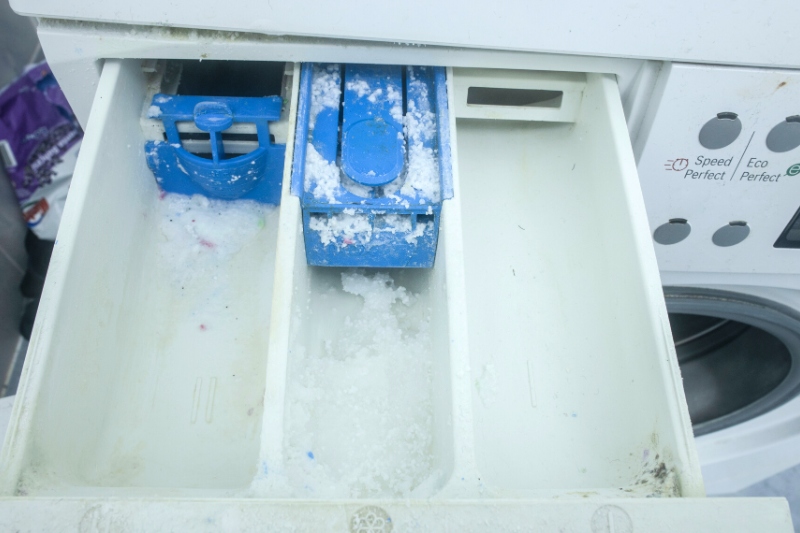
Similar to hard water, using too much or poor-quality laundry detergents can also trap lint in fabrics.
In fact, many people use excess detergent to try and combat lint, but more detergent doesn’t necessarily result in better cleaning – it will likely make the problem worse.
The excess detergent may create a soapy residue that attracts and retains lint particles.
Low-quality detergents are also more likely to leave behind residues on your clothes. These residues can contribute to lint accumulation, making the clothes appear dull and attracting more lint during subsequent washes.
The solution: Use less detergent or change your detergent type
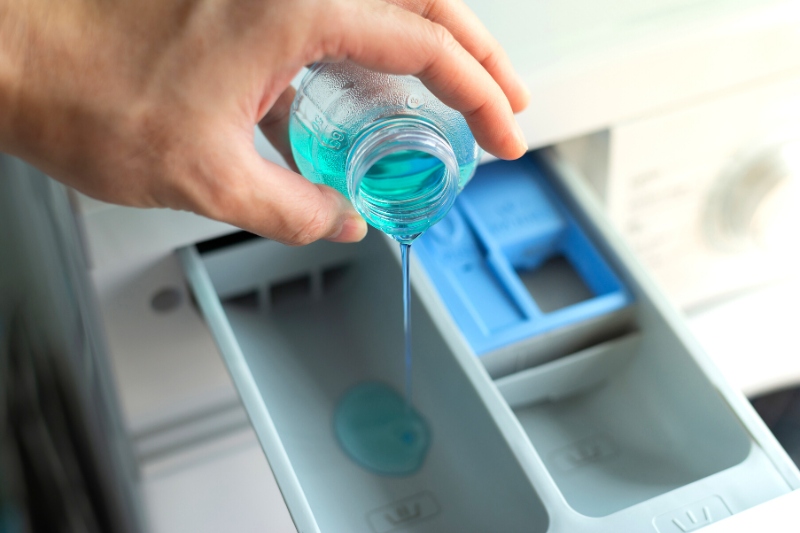
Adhere to the recommended detergent usage guidelines provided on the bottle of your detergent.
Using the appropriate amount ensures effective cleaning without leaving excessive residues.
You should also check that you’re putting it in the right place in your washing machine as if it enters the machine at the wrong point, it may not dissolve properly.
If you can afford to, you might also want to invest in higher-quality detergents. Ideally, shop for those that are formulated for your specific washing machine and water conditions. Quality detergents are designed to dissolve effectively, leaving minimal residues on clothes.
Cause 6: Lack of washer and dryer maintenance
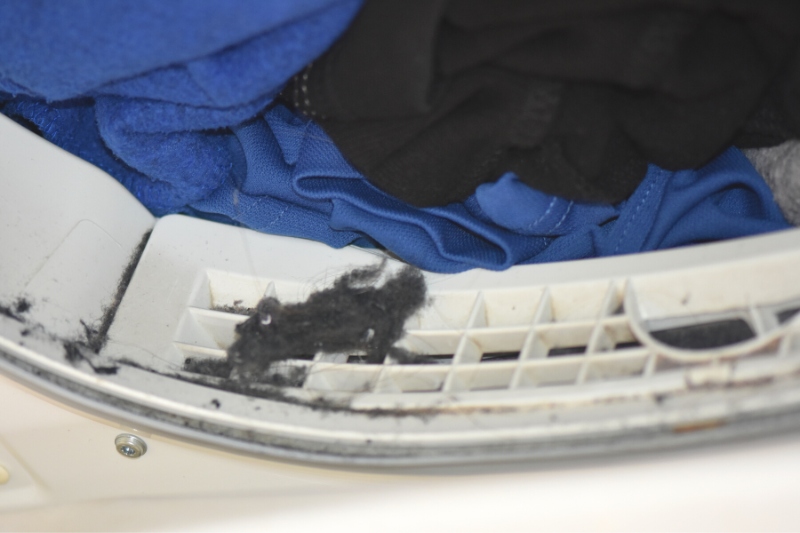
Rather than issues with your clothes, detergents, or washing practices, the accumulation of lint could be caused by an issue with the washer itself.
The most common problem is people not regularly cleaning the lint traps in the washer and dryer. When not cleaned, these filters become less effective in capturing lint, meaning more ends up on your clothes.
Other washer and dryer maintenance issues that could contribute to lint include:
- Residue inside the washer: Without regular cleaning of the washing machine drum and detergent dispensers, detergent residues and lint can accumulate. These residues may transfer onto clothes during subsequent washes, contributing to lint buildup.
- Inefficient drying: A poorly maintained dryer with a clogged lint filter or exhaust vent can result in inefficient drying. Clothes that are not adequately dried may retain more lint, as the fibres can stick together when damp.
The solution: Regularly empty lint traps and clean the interior of your washer and dryer
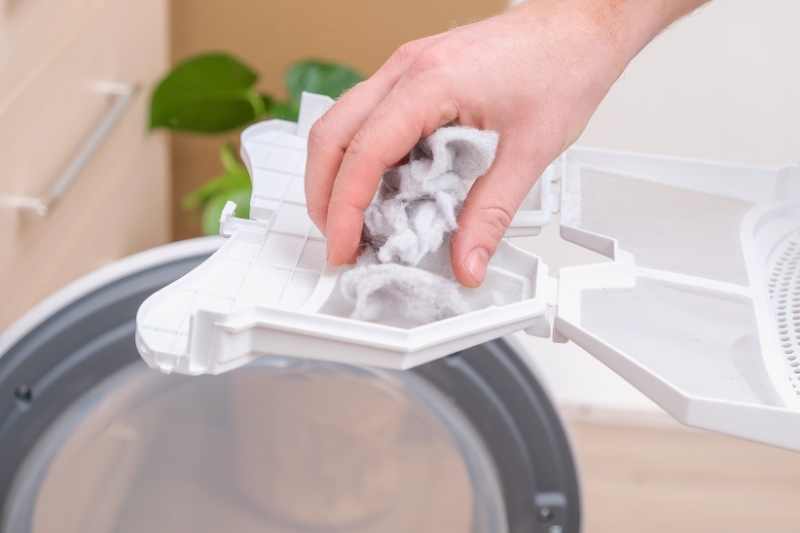
In both the washing machine and dryer, clean lint traps or filters after each use. This prevents lint from circulating back onto the clothes during subsequent cycles.
Ensure the dryer exhaust vent is clean and free of lint buildup, too. A clogged vent can lead to inefficient drying and contribute to lint build-up.
You’ll also want to regularly check and clean detergent dispensers and the drum of the washing machine. Residue buildup in these areas can transfer onto clothes, contributing to lint accumulation.
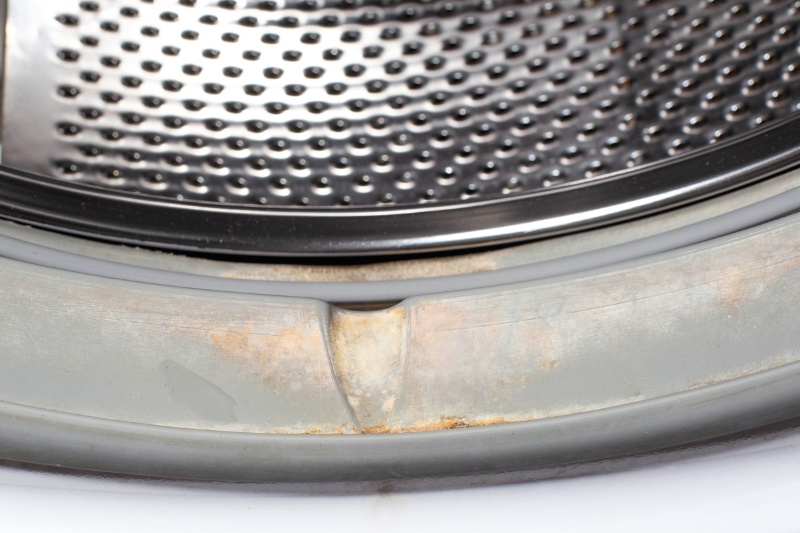
Periodically running empty cycles with hot water and a cup of white vinegar or bicarbonate of soda is an easy way to quickly clean the washing machine interior.
Hopefully, these solutions should help your clothes come out of the washing machine fresh, clean, and lint-free. And if all else fails, lint rollers and brushes can help you remove lint from clothes after they’ve been washed and dried.
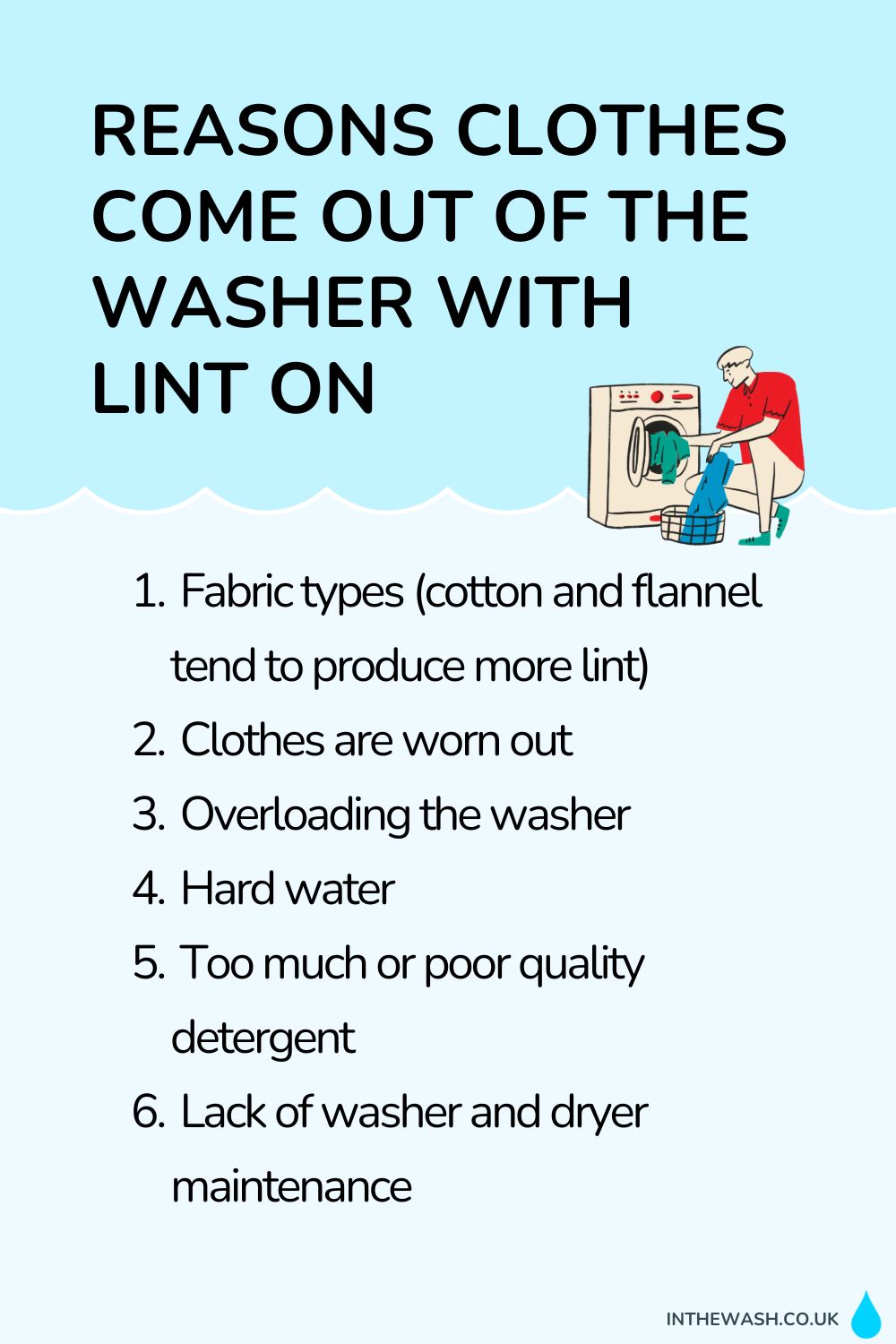

Hannah has a passion for cleaning. She worked her way around Australia by cleaning hostels in exchange for free accommodation and used her cleaning skills to bag a job as a chalet host for a luxury ski company in France.
